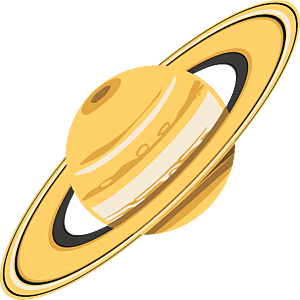The Downlink • Jan 08, 2021
Processing images of the cosmos and returning to the Moon
Space Snapshot

Saturn’s north polar storm looks glorious in this false-color image from NASA's Cassini spacecraft taken in 2013. The image was captured using a combination of spectral filters sensitive to wavelengths of near-infrared light and then processed to be visible to the human eye. Image credit: NASA/JPL-Caltech/SSI
You love space, now take action
This weekly newsletter is your toolkit to learn more about space, share information with your friends and family, and take direct action to support exploration. Anyone can subscribe at planetary.org/connect to receive it as a weekly email.
Mission Briefings


Beresheet2 will launch to the Moon in 2024. The mission will build on lessons learned from Beresheet1, which crashed on the Moon in 2019. Israeli non-profit SpaceIL says the mission will include two landers and one orbiter, and that children, students, and scientists around the world will be able to communicate with the orbiter and perform experiments. Pictured: The Beresheet1 lander returned this photo of the Moon from an altitude of 22 kilometers before its unfortunate landing failure. Image credit: SpaceIL.

The European Space Agency’s ExoMars 2016 mission still hasn’t found any methane on Mars. The findings come from data collected by the Trace Gas Orbiter spacecraft between 2018 and 2019 and support earlier preliminary results. Methane is produced naturally by both life and non-life processes and has been detected by other space missions. How much Martian methane exists and where it comes from is an area of active study.

A Northrop Grumman Cygnus supply spacecraft left the International Space Station on Wednesday. The vehicle arrived in October and is named after Kalpana Chawla, the first female astronaut of Indian descent. After departure, the Cygnus will autonomously conduct experiments in orbit before reentering the atmosphere for destruction.

As part of a surge in last-minute Trump administration space policies, the White House released a report on planetary protection. The report identifies work to be done with commercial companies to develop guidelines for private missions to places like Mars. NASA has its own set of planetary protection guidelines that do not cover missions unassociated with the agency.
From The Planetary Society


Anyone can process space images, even you! Image data from NASA and other space agencies can be accessed for free by anyone, and you can learn to process them to enhance color, sharpen contrast, combine multiple images into cohesive mosaics (like this one, created by amateur image processor Ian Regan from Voyager 2 data), and more. You can learn the basics of space image processing in our free online course from expert Emily Lakdawalla. Image credit: NASA/JPL/Ian Regan.

Where might solar sails take us? On this week’s Planetary Radio host Mat Kaplan chats with Les Johnson, principal investigator for the NEA Scout and Solar Cruiser missions, about the myriad possibilities of solar sailing. They also discuss Stellaris: People of the Stars, a collection of science fact and fiction co-edited by Johnson.
What's Up

Mars shines bright and reddish overhead (to the north if you live in the southern hemisphere, and vice versa) in the early evening. Jupiter and Saturn are very low to the horizon in the west, but very difficult to spot as they set just after sunset. Venus is also low to the eastern horizon just before sunrise. Learn more at planetary.org/night-sky.
Wow of the Week

Planetary Society supporter Mike Morgan shared this painting he made in 1989. After taking in the gorgeous reds, oranges, and blues of this Martian landscape, notice the small human-made facility depicted in the bottom right. Morgan’s painting imagines a human settlement that is harvesting methane in order to alter the Martian atmosphere.
Do you have a suggestion for the Wow of the Week? We’re looking for space-related art, music, gadgets, quotes, fashion, burning questions, brief sci-fi passages, or anything else that will make our readers go “Wow!” Send us your idea by replying to any Downlink email or writing to [email protected], and please let us know if you’re a Planetary Society member.


 Explore Worlds
Explore Worlds Find Life
Find Life Defend Earth
Defend Earth


